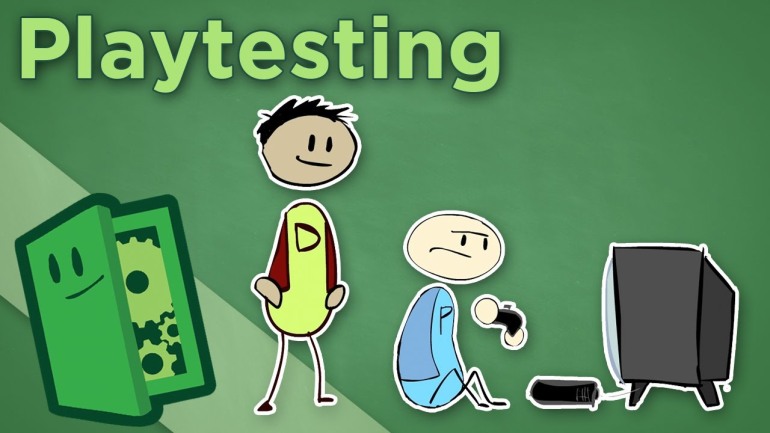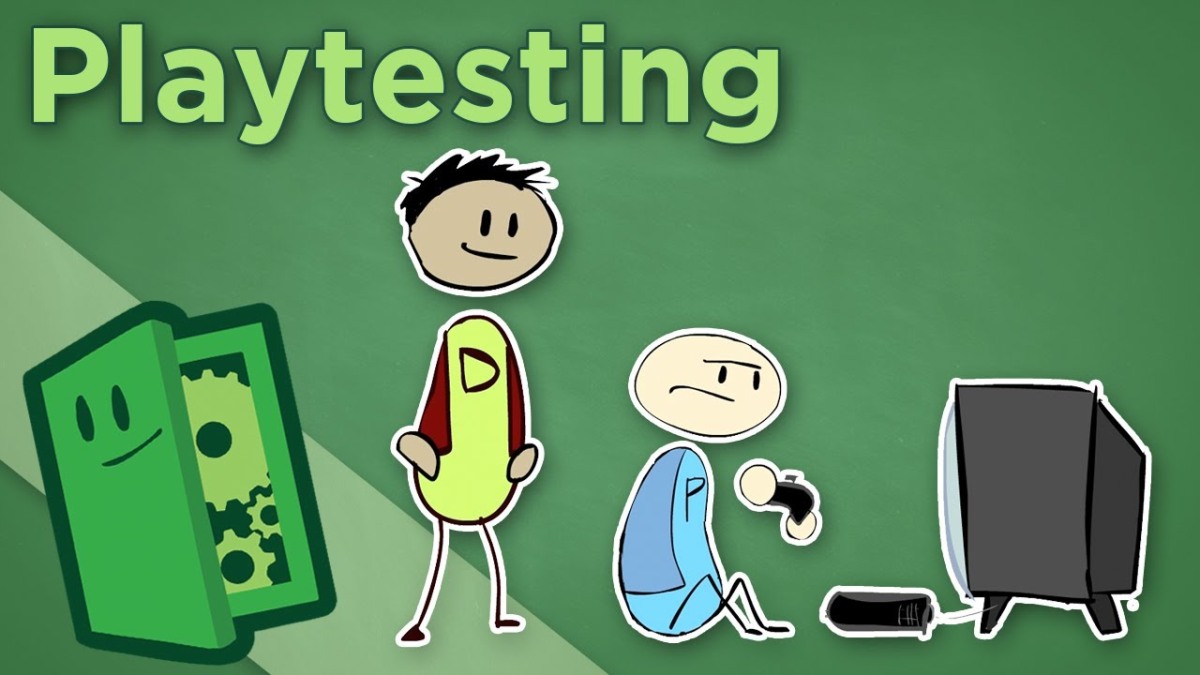
Image: Thumbnail from Extra Credits’ YouTube channel – scr: Extra Credits – playtesting
Playtesting is an important aspect of a game development process. It is very easy as a developer to fall into a state of linearity in the sense that you only test features in the way you meant them to be used. When someone from outside of the development team test the game, you might find issues and bugs that you had never been able to find yourself, since you never would have interacted with the game in that particular way.
As a team, we had a lot of issues regarding playtests in general. Severe bugs were caused by last minute changes and GitHub problems during the alpha and beta playtests which caused the game to be more or less broken during both playtests. This, of course, caused the issue where the build the testers played was not represantative of the game as it was before the issues. Luckily, we were able to extract some important feedback from the testers regarding aspects of the game that would have been an issue even if the builds did not break.
Fog
The fog mechanic of the game was something that we struggled with throughout the development process. Several playtesters remarked that the fog reminded them more of clouds being reflected on the surface of the sea instead of actual fog. Some testers even reported that the behavior of the fog made them feel nauseous.
The fact that the fog was one of the things that did not break made it apparent to us that something had to be done. One of the artists of the team, Gunnlaugur Arnarson, sat down and managed to find a brilliant solution. The solution was an animated sheet of fog that was attached to the camera using a script that was reusable and ended up looking really good in game. This solution was a clear improvement from the previous system using custom particles and particle systems.
Player controls
The movement system proposed in the concept document of the game were designed for a more linear game where the forward movement would be constant. We made the decision early on in the project to turn the game into an open world game with exploration elements. This meant that the movement had to be re-designed with the new open world in mind. We settled on a system using W/Up arrow key to accelerate the ship while S/Down arrow key was used to reverse the ship. A&D/Left & Right arrow keys were used to turn the ship by rotating it. A small number of playtester thought that these controls were confusing since W/Up arrow key still were used to go forward when the ship was pointing downwards on the screen.
We decided to create alternate controls for the ship just to see whether inverting the role of W, S, Up, and Down when the ship was pointing downwards would benefit the experience of the player. It became apparent immediatly that the alternate controls were more of a hinderance to the gameplay than a benefit. The reason for this was that the ship started reversing when it entered a certain rotation while W was pressed, this happened because the buttons were inverted. This caused awkward movement that became an issue when the player were in combat or in an area where precise movement was key. This caused us to keep using the first movement system instead, since it was supperior considering the layout of the level and the nature of the combat.
Conclusion
Playtesting did not greatly affect the development process because of the issues that occured. These issues put the testers in a position where it was hard to give any constructive and useful feedback since the game they tested was a broken mess. Some playtesters did, however, provide useful feedback as well as constructive critique that we could use to improve the experience of the players.
